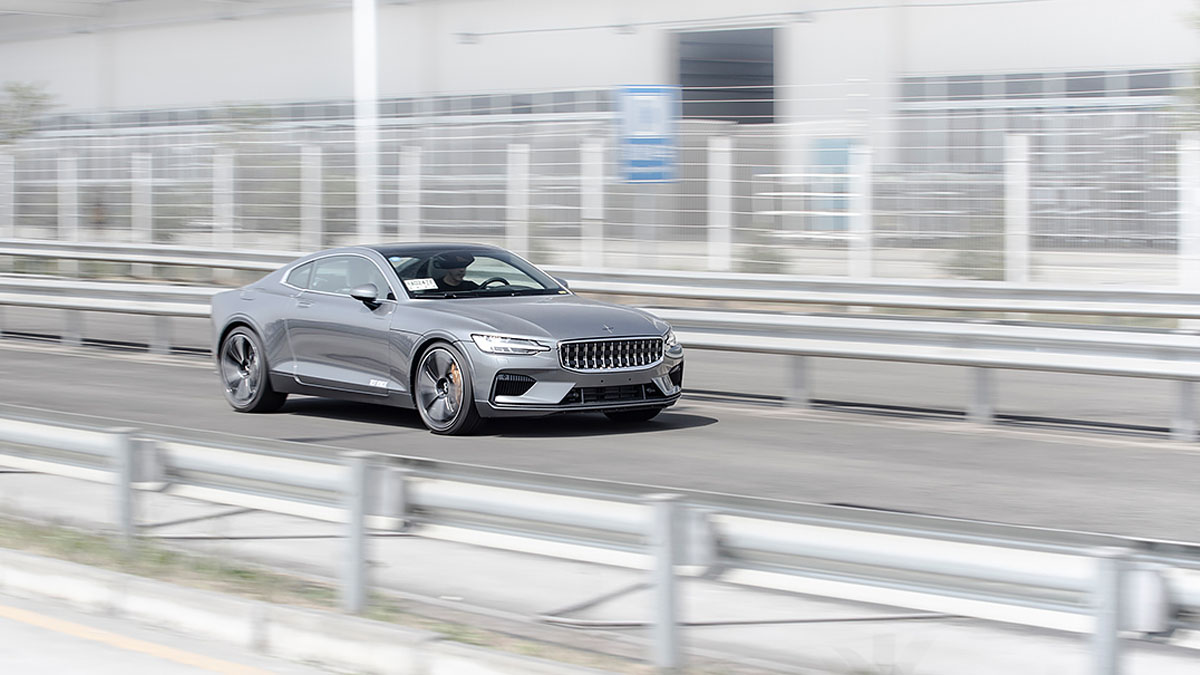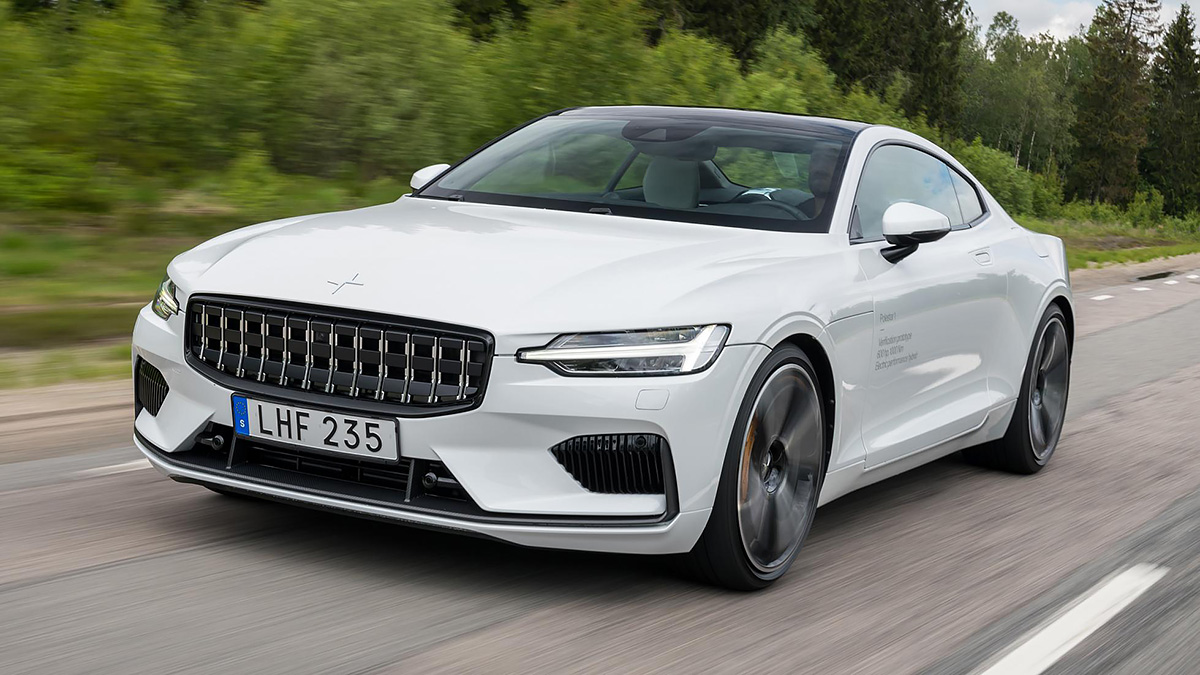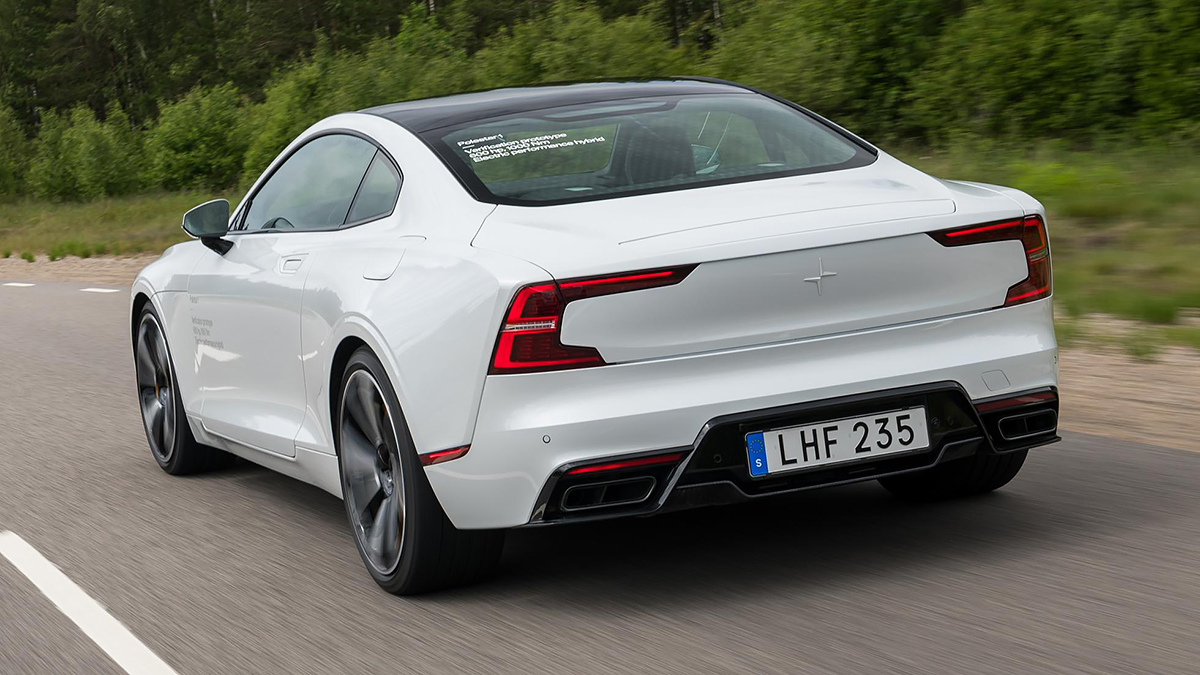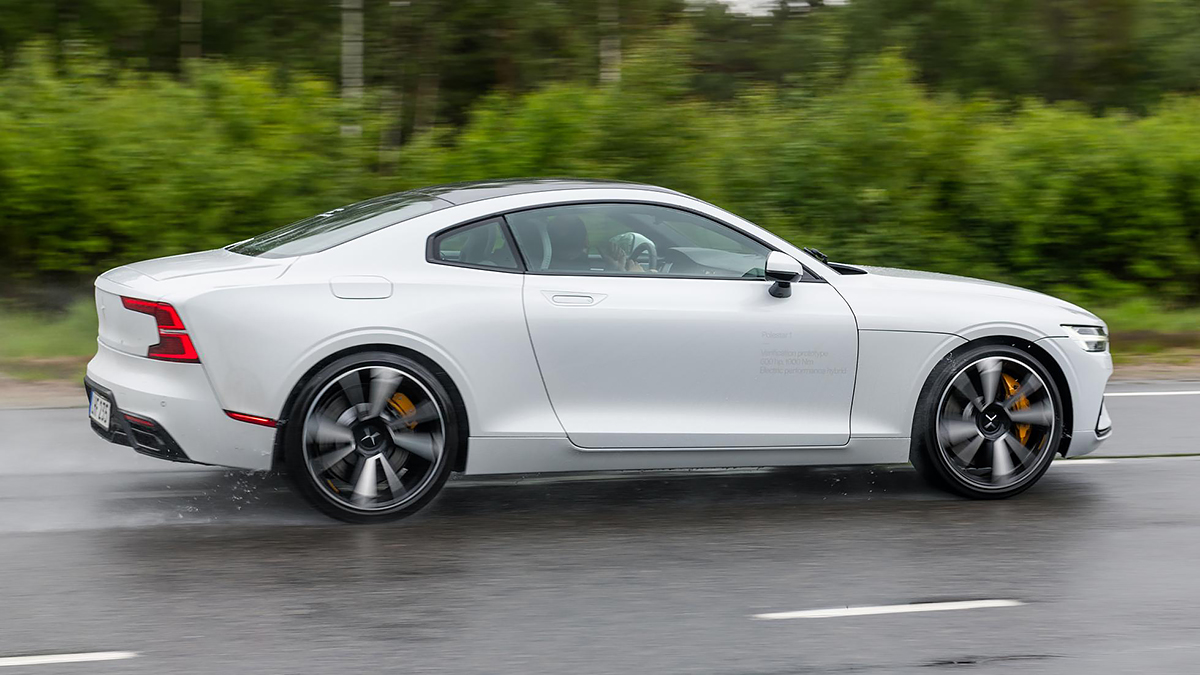Test drive: Polestar 1
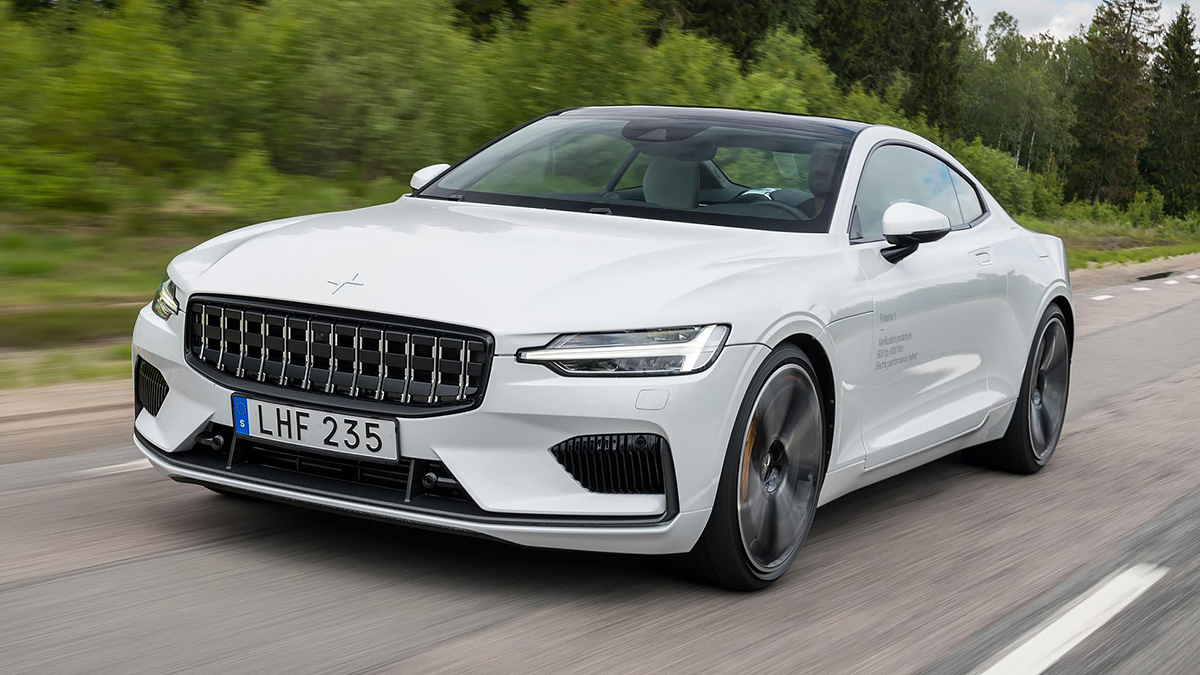
Overview
The first car from Volvo’s future-tech/luxury off-shoot, Polestar. Not to mention owner of the most straightforward name imaginable. The 1, likely to be the most expensive car the firm will ever build, and the only hybrid (the 2 and beyond will all be exclusively electric) is a Super GT. So far, so simple.
But Polestar is equally keen to do things a bit differently. Given its price (£139,000), power (600bhp), weight (2350kg) and exclusivity (only 1500 will be sold globally), you might be thinking Bentley Continental GT, Mercedes S-Class Coupe or BMW 8-Series. I was. But this bucks the trend for air suspension or adaptive dampers. It sends more power to the front wheels than the rears. The brakes are from Akebono, the same people who made the McLaren P1’s stoppers. Aside from the bumpers, the whole body is carbon, and so is the car’s upper structure. And the dampers it does have are manually adjustable, via knobs on the damper turrets.
Part GT, part racer, then? Nope, a GT, but differently done. It’s based on a shortened version of the Volvo S90 SPA platform, but with roughly 200mm chopped out of the wheelbase and a further 200mm removed from behind the rear wheels. To make up for that additional carbon bracing has been used, boosting overall chassis stiffness by 45 per cent. Underneath the bonnet sits a 2.0-litre four-cylinder that’s both turbo and supercharged. That’s borrowed from the XC90 T8, and delivers 308bhp (unless you’re in America, where lucky owners have 326bhp). It drives the front wheels alone, boosted by a 68bhp electric motor on the crankshaft to act as starter motor, torque fill for gearchanges and the like.
The rear wheels are driven by a pair of electric motors, each with their own planetary gearset, permitting complete torque vectoring. Together they develop a further 232bhp, drawing power from a 34kwh, 342kg battery pack mounted in a T-shape down the car’s centre line and across behind the rear seats.
Maximum system outputs are 600bhp and 1,000Nm, and on pure electric Polestar claims a 93-mile (150km) range. This car is a late development prototype, built in Sweden, while production versions will be built at Polestar’s own Chengdu facility in China. As yet Polestar has made no performance or overall fuel economy claims.
The carbon bodywork allows the creation of edges twice as sharp as steel, and Polestar has deliberately given the One cues from the iconic Volvo P1800 (notice the downward curve of the shoulder line at the rear?). It’s designed to be an attention-grabbing, flag-waving, standard-bearer for the Polestar brand (the mainstream Two electric SUV arrives next year), just done in a typically understated Swedish way.
Driving
The Polestar 1 has dampers that adjust through 22 clicks. You could, if you so desired, soften off the front completely, and stiffen up the rear, just to see what happens. As standard it ships with the dampers in 9 at the front, 10 at the back, with suggestions in the owner’s manual for how you might like to run it softer or harder. But still: manual dampers. And while you adjust the fronts on the damper turrets under the bonnet, to get to the rears you either need pipe cleaner arms to reach around the back of the wheels, or a trolley jack.
Not only is this not exactly practical, but who the hell is going to bother? The Polestar 1 is a luxury GT, the embodiment of effortless motoring. So why not give it dampers that can be adjusted at the press of a button inside? I expect it’s been done as a talking point, something to set the 1 apart. They’re made by Ohlins, long-time Polestar racing collaborator, and I suspect these are very, very expensive. Two reasons: first, Volvo has chosen to decorate the brake calipers, seatbelts and dust caps in the same famous Ohlins gold colour and second, what they do to the car is genuinely impressive.
It’s the comfort/control bandwidth the car has that’s downright amazing. It does roll a little, but its roll that telegraphs what the car is up to, how hard it’s having to work. It compresses progressively, rebounds equally smoothly and maintains body control so well you’d never guess the 1 weighed anything like 2.35 tonnes. Joachim Rydholm, the One’s chief development engineer, reckons he’s tested around 80 separate front damper tunes and 115 rear over the last two years. And yes, he had to tune the dampers in every single one of their 22 settings.
Whatever it’s taken it means the One behaves differently to anything else in its class. It’s more connected than most GTs, without being hard. It’s not cossetting though. The Polestar doesn’t sigh along like a Bentley, inhaling and exhaling deep whooshes of air. This is a tenser, more tightly controlled intake and release, there’s less travel in the suspension. More like that BMW 8-Series, but somehow gentler, less rigid in its actions
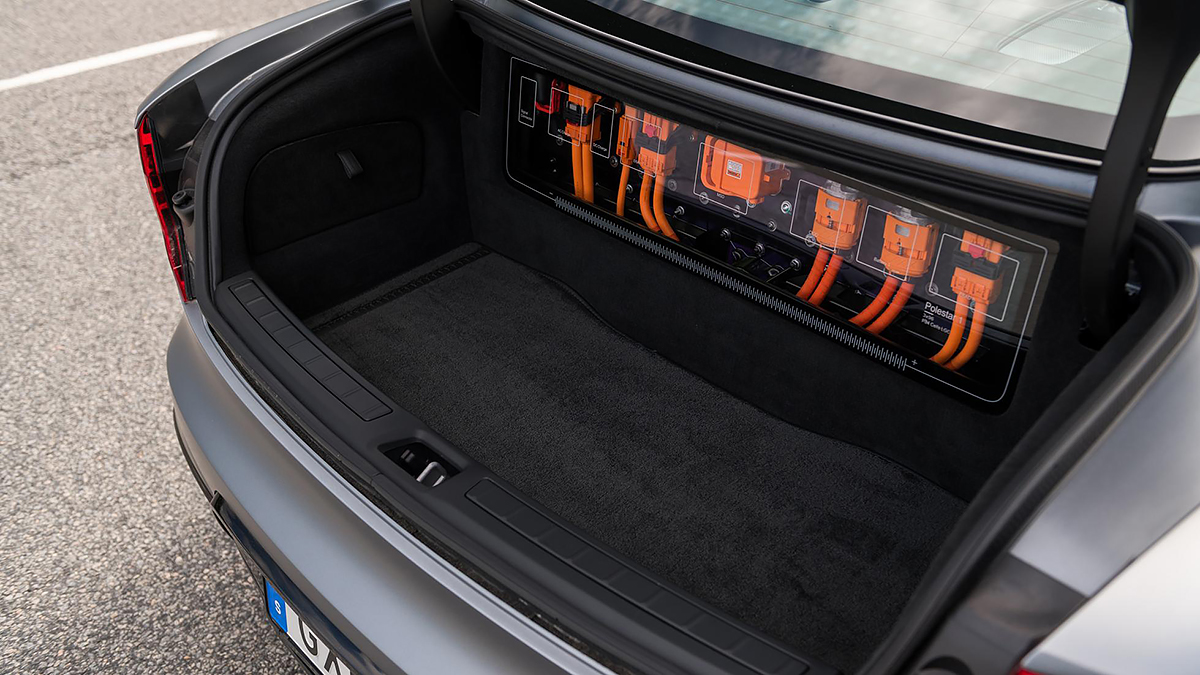
And with better steering. OK, it doesn’t have much feel, but nor is there much slack around the straight ahead. You turn, it moves. Steering response is aided by broad, low profile 275/30 R21 front tyres (295s on the back). They don’t feel low profile because the damping is so in tune with the wheel movement. Those Akebono brakes (not carbon ceramic, but very powerful), however, are too keen for a grand tourer, small pedal inputs getting large results at the 400mm discs. A little less sensitivity would be good. There’s still time for adjustments before production begins.
Let’s talk powerplant. You can drive it in electric-only ‘Pure’ mode and you have a 93mph maximum and good acceleration. I know this because I pulled on to a motorway thinking I was in ‘Hybrid’ mode and enjoying the power, only to realise there was no engine noise. Bring the turbo- and supercharged engine to life by switching to either ‘Hybrid’ or ‘Power’ via a rotary controller on the console and this is a deeply rapid car. Not quite Tesla Ludicrous fast, but good for a 0-100kph time of four seconds or under I reckon.
The engine doesn’t sound as interesting as you hope it might, but stick it in a high gear at low revs and you get a good bassy grumble – and far more performance than you were expecting as the electric motors give their all immediately. The gearbox, an eight-speed auto, is vice-free and well integrated into the drivetrain.
But it’s the balance of this performance that’s most impressive. Here is a hybrid that’s not dominated by electric or petrol alone, but instead hits a happier medium – there’s plenty of action on offer from both (and enough range to make electric only commuting entirely viable). Better yet, the torque vectoring is really noticeable, helping mitigate the effects of all that power going through the front wheels. Hit the power mid-corner and rather than understeer, the electric motors apportion their torque, sending more to the outside rear, less to the inside and managing the traction so the car feels far more neutral. You’re going very fast before understeer gets a look in. In fact, you can actually detect the outside wheel over-speeding, using its force to help rotate the car inwards. It’s an interesting sensation.
Something that applies to the whole car. What we’re dealing with here is a different way of doing a GT. It’s more active, alert and involving than a Conti GT, but although noise insulation and cabin refinement are extremely impressive this isn’t a fully relaxing, completely luxurious car. It’s not busy on the road, in fact the ride is stunning in its ability to control the wheels and deal with rough surfaces, but it wants to be driven rather than guided.
On the inside
It’s very Volvo inside. I don’t think this is much of an issue. Sure, it has a lot in common with an S90 or XC90 costing less than half as much, but this is still a cabin in keeping with the car’s image. Compare it to a similar BMW or Mercedes and it’s competitive. What it’s not is as bespoke and hand-crafted as a Bentley. Inside there are only two colour choices – dark grey or beige, with options kept to a minimum by high standard equipment levels: Bowers and Wilkins stereo, nappa leather etc.
You get more choice outside: exterior trim in chrome or black, wheels with three different finishes and five paint colours, each of which is available in either gloss or matt finishes (the latter a £5,000 option). The roof is darkened, laminated glass that cuts out 95 per cent of UV – there’s no other option and it does without a sliding cover. This is good for headroom in front, but the crossbeam at the back sits above passenger heads. Factor in the very restricted knee/legroom and this is not a car suitable for teenage children.
But then you’re not going to get four people’s luggage in the boot anyway. Doubtless a set of golf clubs will fit sideways, but the boot doubles as a display case for a lot of orange wiring. This is the Polestar’s second engine bay of course, so it’s chosen to put the batteries under a clear cover. Bit of a talking point.
Overall the cabin comes up a little short of the standard you’d normally expect from a £140,000 car. It’s very comfortable of course, easy to get on with, has great phone-mirroring and comprehensive functionality. But it doesn’t have that much sense of occasion.
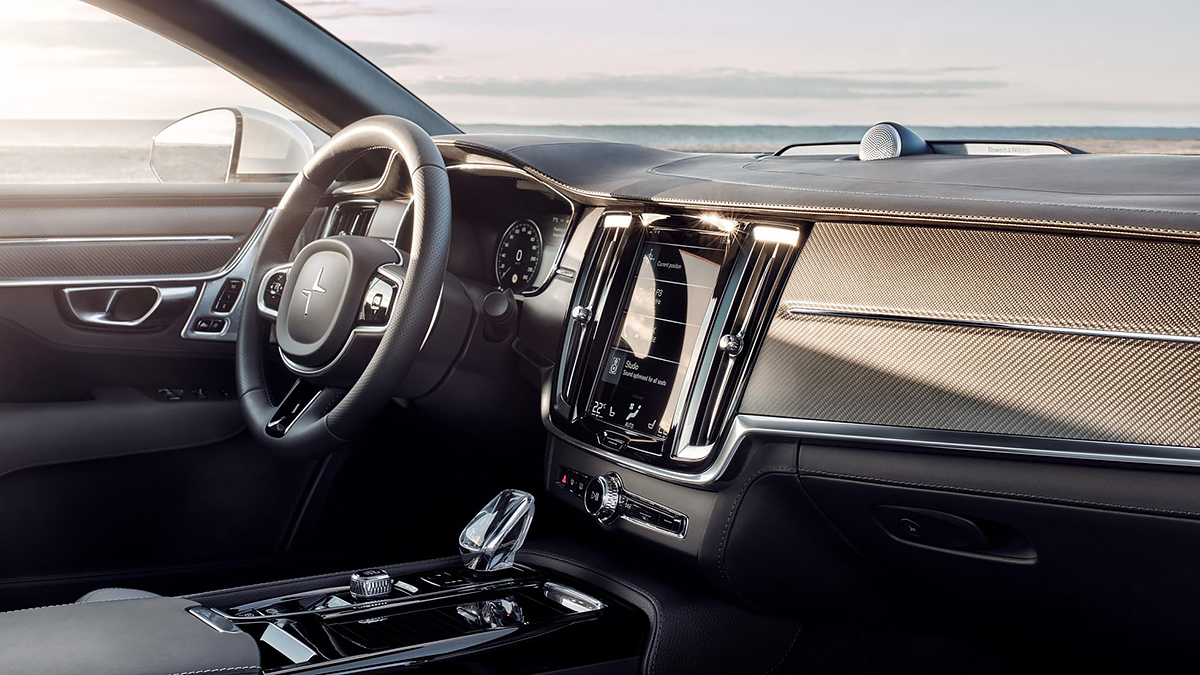
Verdict
The Polestar 1 is a very interesting and hard to box car. Superficially it’s a GT car to rival a BMW 8-Series, but has a price, weight and power that puts it in league with the Bentley Continental GT. Ultimately, it’s quite unique. The combined petrol-electric powerplant has a generous nature – this is not a mealy-mouthed hybrid desperately dodging around emission legislation, but instead a good, sensible, powerful, well-executed solution for a luxury GT. It has the ability to get itself around happily on electric, and when you want a proper hit of torque you can fire up the supercharged, turbocharged 2.0-litre and take off.
And it’s an interesting car to drive, too. More dynamic than we’re used to from the Swedes, cleverer in its construction, more nimble and controlled than you’d ever assume a 2350kg coupe could be. Not the most relaxed car in its class, but its alternative way of doing things is actually rather beguiling.
